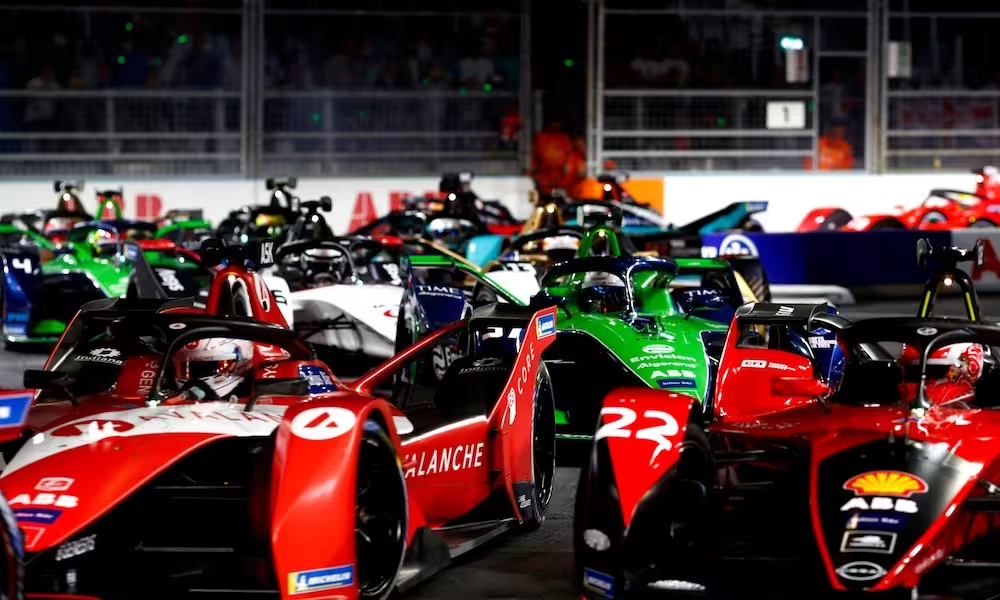Formula E strategy is unlike any other in motorsport and often produces races that throw conventional strategic thought out of the window. As the electric world championship prepares for its season finale in London, we take a look at how this unique strategy works.
The Formula E rules have been written to force teams to utilise the energy from the battery as efficiently as possible. Before each race, the FIA dictates the number of laps and the amount of energy teams may use. Typically, this is around 25 per cent less than what is needed to complete the race, which is why they need to implement energy management techniques and regenerate energy to ensure they reach the finish line.
In the Gen3 era, teams calculate lap energy targets. Essentially, these are the kWh of energy the driver should consume per lap to use all the energy available in the battery in the fastest total race time.
However, the energy consumption targets vary according to the car’s efficiency, as well as track evolution, tyre degradation and the slipstream effect of other cars. Consequently, teams spend much of their time trying to understand these influences.
These are then modelled via a frontier plot, which illustrates the relationship between energy and lap time. Engineers use this plot to identify the lap targets that allow the driver to save energy, for the least possible lap time penalty.
Past Practices
In the previous Gen2 rule set, energy management strategy was relatively simple. The key to winning was to ensure the driver utilised every kWh of allocated energy in the most efficient way possible to achieve the fastest total race time. This typically led to races where the lap energy target remained relatively constant throughout.
Most races in Gen2 went this way, so although energy management was vital, the lap energy targets were a relatively easy calculation. Only if the pace of the leaders was significantly different to what was expected did teams have to adapt their lap counts, and therefore energy targets.
The introduction of Gen3, however, turned the approach to strategy upside down. Formula E races were no longer won by simply achieving the fastest total race time for the allocated energy. Instead, the winner could have excess energy on board their car.
This made race strategy far more complex. Essentially, no driver wants to lead, so the pack bunches up as everyone jostles for position, navigating the tight street circuits three or more cars wide. Then,…
Click Here to Read the Full Original Article at Racecar Engineering…

